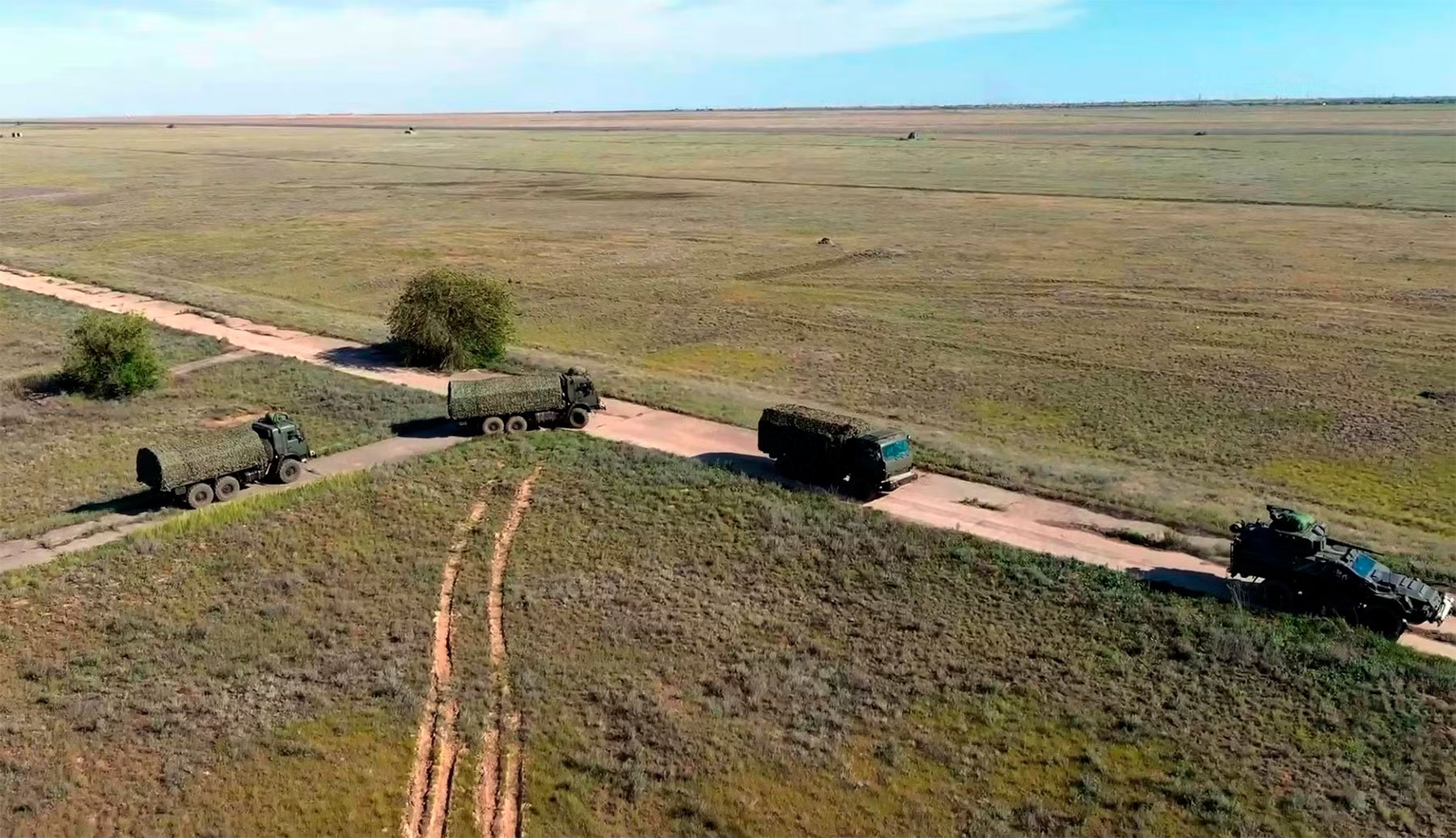The so-called High-Level Peace Summit on Ukraine has concluded in Switzerland. From the very beginning, it was obvious that the notorious “Zelensky plan,” which actually implied a return to the 1991 status quo, was unlikely to be endorsed by such a wide range of participants. However, support for at least some provisions could show that individual points of the “plan” found a response, which means that later on, the question of promoting other points could be raised. These tasks were partly achieved.
The final document of the summit included points on nuclear safety, including a call for the transfer of control over the Zaporozhye NPP to Ukraine, albeit with the IAEA playing a coordinating role. The document also addressed the issues of food security and a prisoner exchange. However, these points are found not only in the “Zelensky plan”, but also, for example, in the 12 points on the settlement of the Ukraine conflict which China previously proposed.
The Swiss document calls for the involvement of “all parties” in the dialogue, hinting at Russian participation. Thus, a summit without Russia, as it were, has authorized Moscow’s inclusion in an already existing format, despite being created without its participation.
On the eve of the summit, Moscow managed to intercept the media agenda. Russian President Vladimir Putin proposed his own plan for ending the conflict. The new Russian plan was even considered by foreign observers as an ultimatum. In fact, it appears to be quite balanced, if not moderate. The Russian leader’s proposals are clearly not the maximum request. Moreover, Vladimir Putin made it clear that in the future the number of requirements will be raised.
The fact that Vladimir Putin revealed the essence of proposals for security in Eurasia also played its role. Previously, the idea was voiced in general terms in the President’s Address to the Federal Assembly. Its contours began to emerge more clearly during Russian Foreign Minister Sergei Lavrov’s visit to China, and then during the Russian president’s visit to China. At the same time, many questions remained about the specifics of the idea. Speaking at the Russian Foreign Ministry, President Putin gave a number of new explanations. Among them is the openness of the system to all participants, including European ones, and the exclusion of non-regional players from it, especially the USA.
The European security system has failed to ensure the principle of equal and indivisible security. The Ukrainian conflict was a direct consequence of its defects. It is unlikely to be resolved solely by an agreement on relations between Russia and Ukraine. The list of issues is much longer and requires the creation of new rules of the game for all regional forces. They can be secured in the new security system.
It is clear that it must be built on the basis of the UN Charter. But experience shows that the Charter can be interpreted in different ways, leading to a dead end in any negotiations. This means that a more precise system of coordinates is required, which would be built on the basis of the Charter, but would exclude manipulations with its interpretations in relation to specific security issues in Eurasia. The Swiss summit stated the need to implement the UN Charter. Russian proposals go further and involve the creation of a new security system.
The so-called High-Level Peace Summit on Ukraine has concluded in Switzerland. The goal of Kiev and its Western partners was to attract as much of the non-Western world majority to the summit as possible. Such a step would show that a wide range of participants are involved in discussing peace plans without Russia’s participation. From the very beginning, it was obvious that the notorious “Zelensky plan,” which actually implied a return to the 1991 status quo, was unlikely to be endorsed by such a wide range of participants. Moreover, a number of countries (including China) ignored the summit entirely, and other participants (including India) did not sign the final document. However, support for at least some provisions could show that individual points of the “plan” found a response, which means that later on, the question of promoting other points could be raised. These tasks were partly achieved.
The final document of the summit included points on nuclear safety, including a call for the transfer of control over the Zaporozhye NPP to Ukraine, albeit with the IAEA playing a coordinating role. The document also addressed the issues of food security and a prisoner exchange. However, these points are found not only in the “Zelensky plan”, but also, for example, in the 12 points on the settlement of the Ukraine conflict which China previously proposed. That is, in the end, there is absolutely no talk of promoting only Ukrainian proposals. The Swiss document calls for the involvement of “all parties” in the dialogue, hinting at Russian participation.
Thus, a summit without Russia, as it were, has authorized Moscow’s inclusion in an already existing format, despite being created without its participation.
This is where the achievements of Ukrainian diplomacy end, and they look very modest taking into account a number of additional factors.
First of all, on the eve of the summit, Moscow managed to intercept the media agenda. Russian President Vladimir Putin proposed his own plan for ending the conflict. The main condition: the withdrawal of Ukrainian troops from the territory of four regions (LPR, DPR, Zaporozhye Region and Kherson Region), which, according to the Russian Constitution, are its own territories. It is obvious that the Kiev authorities will not accept such a formula at the moment. The new Russian plan was even considered by foreign observers as an ultimatum. In fact, it appears to be quite balanced, if not moderate. The Russian leader signalled that Moscow does not include, for example, altering the territorial configuration of other regions of Ukraine in the settlement issue. Meanwhile, there are grounds for putting forward such conditions. Among them is the creation of a “sanitary zone” to suppress the shelling of Russian territory, including border towns, by the Ukrainian army. In theory, the creation of such a “sanitary zone” could accompany the possible advance of Russian troops, for example, in the Kharkov region.
In other words, the Russian leader’s proposals are clearly not the maximum request. Moreover, Vladimir Putin made it clear that in the future the number of requirements will be raised.
This scenario is quite likely, especially if Russian troops are successful. There are prerequisites for success. The Russian army has clearly seized the initiative and is increasing pressure along the entire front line, expanding it in new directions. It is also important that the Russian proposals clearly look closer to current realities than the “Zelensky plan.”
The fact that Vladimir Putin revealed the essence of proposals for security in Eurasia also played its role. Previously, the idea was voiced in general terms in the President’s Address to the Federal Assembly. Its contours began to emerge more clearly during Russian Foreign Minister Sergei Lavrov’s visit to China, and then during the Russian president’s visit to China. At the same time, many questions remained about the specifics of the idea. Speaking at the Russian Foreign Ministry, President Putin gave a number of new explanations. Among them is the openness of the system to all participants, including European ones, and the exclusion of non-regional players from it, especially the USA. You can argue as much as you like that these proposals are unlikely to be acceptable to Washington and its European allies. The important thing is that Russia comes up with its own initiative and proposes a system in which the principle of equal and indivisible security will be implemented. Here Russian proposals are directly related to the Ukrainian conflict. The European security system has failed to ensure the principle of equal and indivisible security. The Ukrainian conflict was a direct consequence of its defects. It is unlikely to be resolved solely by an agreement on relations between Russia and Ukraine. The list of issues is much longer and requires the creation of new rules of the game for all regional forces. They can be secured in the new security system.
It is clear that it must be built on the basis of the UN Charter. But experience shows that the Charter can be interpreted in different ways, leading to a dead end in any negotiations. This means that a more precise system of coordinates is required, which would be built on the basis of the Charter, but would exclude manipulations with its interpretations in relation to specific security issues in Eurasia. The Swiss summit stated the need to implement the UN Charter. Russian proposals go further and involve the creation of a new security system.
The bottom line is that the summit in Switzerland ended with a quite unclear document, which actually contains no algorithm for resolving the conflict in Ukraine. The helplessness of the document was probably another reason why major players distanced themselves from it and from participation in the Summit itself—why waste political capital on an obviously fruitless initiative? Russia, on the contrary, has come up with specific and clear proposals. Their implementation is hardly possible here and now. But the very fact of forming guidelines and an agenda for the future can be recorded as a Russian asset.
First published in the Valdai Discussion Club.
Quite unclear document vs Specific and clear proposals






